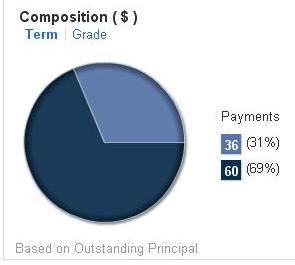P2P lending is picking up popularity, as noted by this recent article in the Wall Street Journal.
With that said, I’m rested and relaxed after my vacation in Korea, and raring to continue my much-awaited series on investing in Lending Club. The introductory posts are here and here, with my first post on strategy here. Note: that last post lays out my final filters, how I decide which loans to fund after they have passed all my initial tests. The final filters are fairly straightforward, I choose to fund loans that (1) have higher interest rates, (2) have 3 year lengths over 5 year lengths, and (3) have smaller total loan amounts.
A quick note before getting to my primary filters: naturally I want to invest in P2P loans in the most efficient way possible. However, there are certain filters that interest me that aren’t available on the Lending Club website. I could go through each loan one by one and filter out the ones who don’t pass all my criteria, but that would take a long time each day and would be prone to error.
That’s why I use the “Download All” feature to download every loan on Lending Club into an Excel spreadsheet each day (explained here). I then created another Excel spreadsheet that automatically filters loans based on criteria that I’ve developed. Creating this filtering Excel spreadsheet took a few hours, but now means that I can find and invest in loans that pass my criteria in <10 minutes each day.
Now without further ado, let’s finally look at my primary filters. Items in bold and red are filters that the Lending Club website cannot perform. And remember, I’m trying to do what banks didn’t do in the lead-up to the financial crisis. That is, I’m trying to filter out borrowers likely to default so that I can maximize my returns.
1. Remove loans if borrower employer is not specified
Strangely enough, this is not something that you can filter on Lending Club. I like to check out borrower’s employers before investing in loans, and that’s obviously not possible if borrowers don’t list them. If the employer is not listed, I’d rather not look at the loan.
2. Remove loans if borrower has had any delinquencies in the last 2 years
If the borrower didn’t feel the need to pay back his recent obligations, why would he pay back this one?
3. Remove loans that have borrowers with job tenure less than 3 years
A person with a more stable career will more likely be able to pay off their loan than otherwise.
4. Remove loans with application amounts greater than $30,000
The maximum amount that a borrower can ask for in a loan on Lending Club is $35,000. I feel that if someone asks for more than $30,000, they’re just seeing how much money they can borrow and I don’t have as much confidence in their ability to pay back the loan.
Another tactic with loan amounts: I like to see loans that are not rounded off numbers. That is, I’d prefer to fund a loan that asks for $9,650 over one that asks for $10,000. Why? It shows that the borrower has a handle on exactly how much money he needs to get out debt, leading me to believe he is more likely to honor his obligation. The IRS uses the same method when determining who to audit. If someone has an income tax deduction for $4,873 he is less likely to be audited than someone who deducts $5,000. The IRS figures that the $5,000 deduction is just a guess.
Next week I’ll explain a few more of my primary filters.
The information available at Michael Grabowski is for your general information only and is not intended to address your particular requirements. This information is not any form of advice by Michael Grabowski and is not intended to be relied upon by users in making any investment decisions. Michael Grabowski is not liable for any loss or damage which may arise directly or indirectly from use of or reliance on such information.



